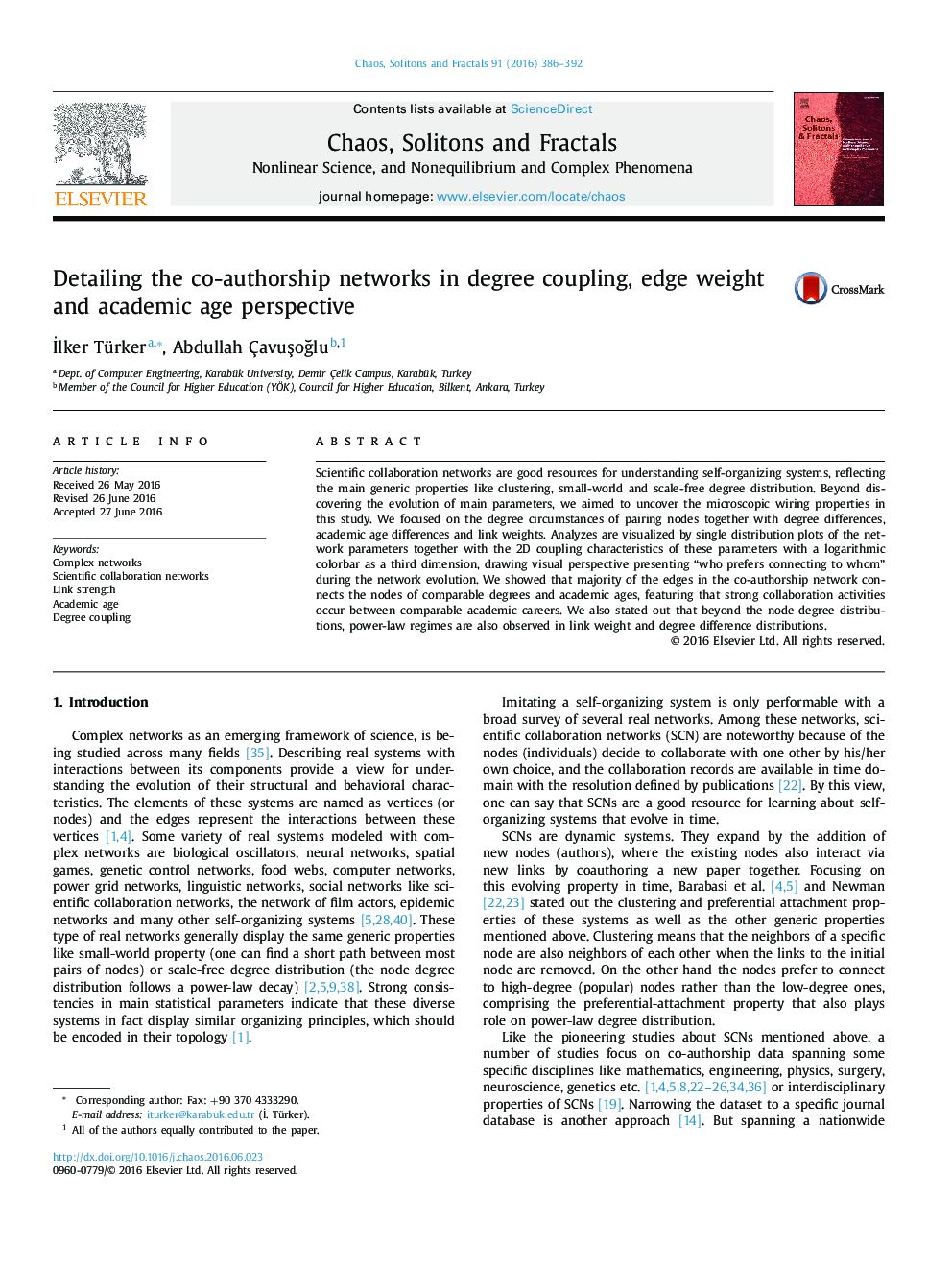| Article ID | Journal | Published Year | Pages | File Type |
|---|---|---|---|---|
| 8254584 | Chaos, Solitons & Fractals | 2016 | 7 Pages |
Abstract
Scientific collaboration networks are good resources for understanding self-organizing systems, reflecting the main generic properties like clustering, small-world and scale-free degree distribution. Beyond discovering the evolution of main parameters, we aimed to uncover the microscopic wiring properties in this study. We focused on the degree circumstances of pairing nodes together with degree differences, academic age differences and link weights. Analyzes are visualized by single distribution plots of the network parameters together with the 2D coupling characteristics of these parameters with a logarithmic colorbar as a third dimension, drawing visual perspective presenting “who prefers connecting to whom” during the network evolution. We showed that majority of the edges in the co-authorship network connects the nodes of comparable degrees and academic ages, featuring that strong collaboration activities occur between comparable academic careers. We also stated out that beyond the node degree distributions, power-law regimes are also observed in link weight and degree difference distributions.
Keywords
Related Topics
Physical Sciences and Engineering
Physics and Astronomy
Statistical and Nonlinear Physics
Authors
Ä°lker Türker, Abdullah ÃavuÅoÄlu,
